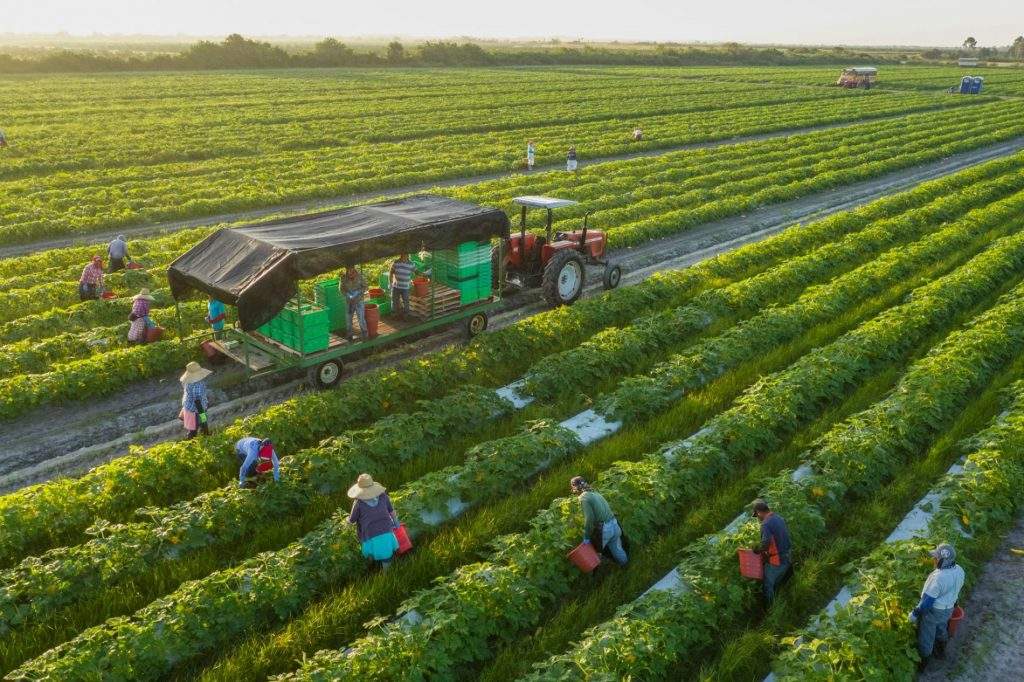
Vegetable Cultivation in The Field– In India, Farming Info

Vegetables are the human’s good source of vitamins and minerals needed for a healthier life. They are an essential constituent of the human daily diet as they are rich sources of minerals, carbohydrates, vitamins, and proteins. In India, vegetable farming is a vital source of income. Vegetables are a needed part of a regular diet, and it is the cheapest source of natural protecting food. Therefore, it gives a higher yield per unit area within the shortest possible time, ultimately increasing income.
- Essential Factors in Vegetable Production
- How to Start Organic Vegetable Garden
- Organic Vegetable Farming in the field
- Factors that Determine Successful Vegetable Product
- Vegetables Fitting for Balcony Garden
- Vegetables You Can Re-Grow From Scraps
- Natural plants to grow at the field
- How to Start an area Vegetable Garden
- Vegetables to Grow in Your area Garden
- Top Herbs for Containers
A Step for Vegetable Farming in the field
Whether it is organic or not, success in vegetable cultivation is incredibly reliant on a well-thought-out plant. Significant factors that should be recognized for growing vegetables are site selection, water stock and quality, crop and quality choice, and market growth. Vegetables are a significant source of income to farmers because of their high yielding. Vegetable cultivation is the growing of vegetable crops mainly for use as human food.
Quality of Vegetable Farming in the field
Green farming grows veggies for human consumption and is an essential source of various vitamins, minerals, and antioxidants producing human health goods. Due to different agro-climatic zones, India can grow several kinds of vegetable crops year-round. With a rise in living and awareness of the advantages of quality food intake, people are now more inclined towards their health and acquiring healthier vegetables. In today’s era variations, farmers adapt modern crop yielding development systems for higher yield, quality biotic resistance, flexibility to adapt to changing climatic requirements, and managing nutrients in the food to make it healthier.
Site Selection for Vegetable Farming in the field
Reducing potential production problems is necessary for all farming services. This is especially true for organic producers. When selecting the site to produce vegetables, the essential points are field topography, soil type, and water availability. Vegetable plants grow well in good soil. It grows well in soft soil, making the plant roots of vegetables grow deep into the soil. These are the site’s physical characteristics, such as soil depth, drainage facility, soil fertility, etc.
Tractor used for vegetable production in the field
Nowadays, without a tractor, there are so many difficulties in growing crops. So, for growing our crops tractors helps farmer for better quality crops and time-consuming also. There are many kinds of tractor brands like Swaraj, Mahindra, Sonalika and many more. For good performance, farmers choose Swaraj 735 XT, and it offers durability and advanced features.
Sunlight Requirement for Vegetable Growing in the field
Most vegetable plants require 4-6 hours of direct sunlight. Therefore, vegetables grow well in locations that receive more than 6 hours of light. In cities, container gardening is the most natural way of producing veggies.
With vessels, the vegetable garden can be arranged up in the yards or rooftops. South and west-facing lobbies at house get the most sun, replaced by the east surface. For producing salads and leafy greens, north-facing balconies are best to get daylight only during the summer periods. Fruiting vegetables such as tomatoes and eggplants can be planted in the south or west-facing terraces.
Sowing and Planting in Vegetable Cultivation at the field
Producing vegetables start with sowing or farming. Sowing vegetables means putting a seed straight into the conserved soil. Along with this, vegetable planting involves the practice of placing already produced seedlings into the soil.
There are two types of seedlings
- Bare root seedlings are produced in the area by seed. Then, their roots are segregated from the soil when they are moved to the growing site.
- Rootball seedlings are planted in pots or blocks and then moved to the planting site with the soil connected to the roots.
Sowing is used for vegetable plants with fragile roots like Carrots, Turnips, and Radishes. Growing vegetables from seedlings are suitable for slow-growing perennials, tender and high seeds, and warm-season crops. Planting is approved for yearly green plants when the soil is too chilly or humid for direct sowing. For example, onion and asparagus are vegetables that are planted.
Water Demand for Vegetable Farming
Water is the life-blood of vegetable agriculture. Vegetable crops need total water and more frequent watering than other agri-based crops. So, only fields with easy access to a good water source should be reconsidered for vegetable production. The water source must provide the volume required for the maximum demands of the highest H2O using crop to be planted. Most vegetable crops need a constant supply of rain throughout the producing season. Water is essential for vegetable crops, and plant roots from the soil absorb it through processes of osmosis and diffusion. Besides water consumption and translocation of nutrients from the soil, water also influences photosynthesis, respiration, transpiration, nutrient utilization, and cell division.
For more such informative blogs, stay tuned with us.